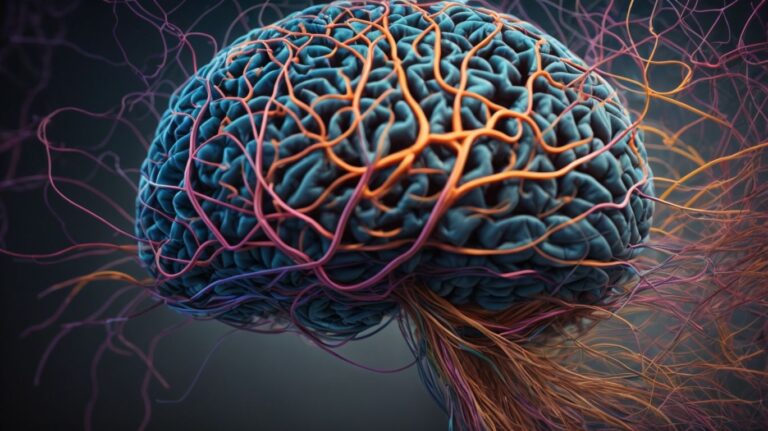Are you curious about the fascinating world of memory and cognition? In this article, we will delve into the Recency Effect, a concept that plays a crucial role in how we remember information. We will explore the definition of the Recency Effect, compare it to the Primacy Effect, and discuss how it works.
We will examine the factors that influence the Recency Effect and explore theories that explain this phenomenon. Real-life examples and tips on how to avoid the Recency Effect will also be discussed. Join us on this journey to unravel the mysteries of memory and cognition!
Contents
- 1 What is the Recency Effect?
- 2 What is the Primacy Effect?
- 3 How Does the Recency Effect Work?
- 4 Theories Explaining the Recency Effect
- 5 Real-Life Examples of the Recency Effect
- 6 How to Avoid the Recency Effect?
- 7 Conclusion
- 8 Frequently Asked Questions
- 8.1 What is the recency effect in psychology?
- 8.2 How is the recency effect studied in psychology?
- 8.3 What causes the recency effect in psychology?
- 8.4 What are some implications of the recency effect in everyday life?
- 8.5 How does the recency effect relate to the primacy effect?
- 8.6 Can the recency effect be overcome or reduced?
What is the Recency Effect?
The Recency Effect, a concept in psychology and memory studies, refers to the phenomenon where items at the end of a list are more likely to be remembered in a memory test.
This effect is closely tied to short-term memory since these recent items are still fresh in the mind, making them easier to recall compared to items encountered earlier in the informational sequence. When we think about cognitive tasks or memory tests, it becomes evident that the recency effect plays a vital role in shaping our ability to retrieve information.
For instance, in a simple recall exercise, the items at the end of the list are often more accurately remembered than those from the middle, showcasing how our memory is influenced by the sequential order of information.
Definition of the Recency Effect
The Recency Effect can be defined as a cognitive bias in memory where the most recent information in a series is better recalled compared to the preceding items.
This phenomenon plays a significant role in information processing, demonstrating how our brain strategically organizes data based on temporal cues. It suggests that information closer to the end of a sequence is more readily accessible due to its freshness. The recall of earlier items may suffer from interference as the newer details dominate the memory retrieval process. Age can also influence the strength of the Recency Effect, with younger individuals often exhibiting a more pronounced bias towards recent information.
What is the Primacy Effect?
In contrast to the Recency Effect, the Primacy Effect in psychology and memory research highlights the superior recall of items at the beginning of a list.
The Primacy Effect has significant implications for the learning process. When educators understand this phenomenon, they can structure their teaching methods more effectively to enhance student retention of key information.
By starting a lesson with crucial concepts or main points, instructors can leverage the Primacy Effect to help students remember fundamental material better. Consider incorporating a recap or summary at the beginning of a class to tap into this cognitive bias. This aligns with essential teaching tips that prioritize the organization of content for optimized learning outcomes.
Comparison to the Recency Effect
When comparing the Primacy Effect to the Recency Effect, researchers have observed that participants tend to better recall the first items in a sequence, showcasing the importance of initial impressions in memory tasks.
This phenomenon is widely studied in the field of social psychology, where researchers delve into how the order of information impacts memory retrieval. The Primacy Effect is often associated with long-term memory formation, as the first items are encoded more deeply. On the other hand, the Recency Effect highlights the impact of recent information on immediate recall, showing how memory can be influenced by the most recent items encountered. Through various experiments and studies, experts continue to uncover intriguing insights into human memory and cognition.”
How Does the Recency Effect Work?
The Recency Effect operates by leveraging short-term memory capabilities to prioritize recently presented information over earlier items, demonstrating a reliance on cognitive abilities for immediate recall.
Experiments have shown that when individuals are presented with a list of items and asked to recall them, they tend to remember more of the items presented towards the end of the list. This phenomenon is attributed to the limited capacity of short-term memory to hold information temporarily.
Short-term memory plays a crucial role in the Recency Effect as it enables us to retain and retrieve recent information easily, giving it an advantage over older memories in the recall process.
Factors that Influence the Recency Effect
Various factors play a role in influencing the Recency Effect, including age-related memory processes, attention span, and the presence of interference that can impact the recollection of recent information.
Interference, a prominent variable, refers to the way in which new data may disrupt the retention of recent memories. Experiments indicate that when individuals are exposed to conflicting information or distractions immediately after receiving new inputs, the accuracy of their recall diminishes.
Age-related changes in cognitive function can affect the storage and retrieval of recent events. As individuals grow older, their memory mechanisms may become less efficient at processing new data, leading to a decline in recollection performance.
Theories Explaining the Recency Effect
Several theories have been proposed to explain the Recency Effect, with the Serial Position Effect Theory, Dual-Store Model of Memory Theory, and Levels of Processing Theory offering insights into how sequence impacts memory recall.
The Serial Position Effect Theory posits that the positioning of an item in a sequence affects its recall, with items at the beginning (Primacy Effect) and end (Recency Effect) being more easily remembered. Researchers have found that the Recency Effect is influenced by the most recent items being fresh in short-term memory. This effect is particularly strong when the retention interval is short.
The Dual-Store Model of Memory Theory suggests that information is processed differently in short-term and long-term memory stores, impacting how sequences are encoded and retrieved.
Serial Position Effect Theory
The Serial Position Effect Theory posits that the position of an item in a series determines its recall likelihood, with both the beginning (Primacy Effect) and end (Recency Effect) receiving enhanced memory retention in experiments.
Research in psychology has shown that when participants are presented with a list of items, those at the beginning of the list are more likely to be remembered due to the Primacy Effect, linked to the process of encoding them into long-term memory. Similarly, items at the end of the list, the Recency Effect, are better recalled because they are still in the short-term memory. This means that items in the middle of the list are often forgotten as the brain prioritizes the first and last items for retrieval.
Dual-Store Model of Memory Theory
The Dual-Store Model of Memory Theory suggests that memory is segregated into a short-term store and a long-term store, with the Recency Effect primarily associated with the short-term memory’s immediate recall capabilities.
Short-term memory, a crucial component of the Dual-Store Model, is responsible for holding onto information for a brief period, typically around 20-30 seconds. This form of memory plays a significant role in daily activities like remembering a phone number or a grocery list. As the brain engages in information processing, short-term memory is instrumental in the initial stages, facilitating the transfer of data to long-term memory for more permanent storage. Cognitive abilities, such as attention and rehearsal, heavily influence how effective this process is, ultimately impacting our ability to retain and retrieve information.
Levels of Processing Theory
The Levels of Processing Theory suggests that the depth of cognitive processing influences information recall, with shallow processing favoring the Primacy Effect and deeper processing enhancing the Recency Effect in memory tasks.
This theory, proposed by Craik and Lockhart in the 1970s, revolutionized the field of cognitive psychology. It highlights how the quality of cognitive engagement impacts memory retention. When individuals engage in semantic encoding, where they process information deeply by relating it to their existing knowledge base, it leads to stronger memory recall.
For example, as people grow older, their attention span may decrease, affecting their ability to engage in deep processing levels. In social psychology, this theory is crucial as it explains how social interactions and context can influence memory formation and retrieval.
Real-Life Examples of the Recency Effect
The Recency Effect manifests in real-world scenarios such as advertising, where recent information or impressions can heavily influence consumer decision-making processes.
Advertisers strategically leverage the Recency Effect by incorporating temporal cues such as urgency in their marketing campaigns. This can be seen in limited-time offers or flash sales that create a sense of immediacy, tapping into the tendency of individuals to give more weight to recent events. By utilizing this cognitive bias, advertisers aim to position their products or services at the forefront of consumers’ minds. For instance, a car company promoting an exclusive discount that ends within a week can capitalize on the recency bias, prompting potential customers to act swiftly.
Advertising and Marketing
In the realm of advertising and marketing, advertisers leverage the Recency Effect to enhance brand recall and influence consumer behavior by strategically placing key information towards the end of campaigns.
This tactic takes advantage of the Recency Effect, a psychological phenomenon where individuals tend to remember most recent information more clearly than earlier details.
By ensuring that crucial brand messages or product features are presented towards the conclusion of an advertisement, marketers aim to leave lasting impressions on the viewer’s memory. Considering the limitations of memory capacity and the fleeting nature of attention spans, this strategic positioning helps in increasing the chances of influencing decision-making at the moment of purchase.
Job Interviews
During job interviews, the Recency Effect can impact an interviewer’s perception of candidates as recent responses or achievements tend to leave a stronger impression, influencing decision-making processes and candidate evaluations.
The Recency Effect, a psychological phenomenon, is part of a range of cognitive biases that shape how interviewers perceive candidates’ suitability for a role. These biases can stem from various factors, including the order in which information is presented during the interview.
For instance, if a candidate performs exceptionally well in the final segment of an interview, the interviewer may subconsciously give more weight to these recent responses, overshadowing the content of the earlier sections.
How to Avoid the Recency Effect?
To mitigate the impact of the Recency Effect, individuals can employ strategies such as practice, varying presentation styles, and utilizing visual aids to enhance overall memory recall and reduce bias towards recent information.
One key strategy to combat the Recency Effect is to incorporate varied learning approaches. By exposing oneself to information through different mediums like reading, listening, and hands-on activities, the brain is stimulated in diverse ways, leading to a more robust memory retention.
Incorporating rehearsal techniques in one’s study routine can significantly improve memory recall. Regular review sessions spaced out over time help solidify information in the long-term memory, making it less susceptible to the bias towards recent data.
Teaching tips that advocate the use of visual aids such as diagrams, charts, and videos can also facilitate balanced memory retention among learners. Visual representations help encode information in a more engaging and memorable manner, ensuring a deeper understanding of the subject matter.
By combining these effective study tips and teaching tips, individuals can counteract the effects of the Recency Bias and optimize their overall learning experience.
Practice and Rehearsal
Engaging in regular practice and rehearsal can help individuals counter the Recency Effect by reinforcing memory consolidation and promoting a balanced retention of information across various sequences and contexts.
Consistent engagement in these cognitive activities becomes particularly crucial as age advances, given the natural decline in memory functions. The learning process itself benefits from repetition and rehearsal, as it strengthens neural pathways essential for information retrieval and comprehension. By constantly revisiting and practicing learned material, one not only solidifies memory but also diminishes the selective bias that the Recency Effect can exert on recall. This deliberate effort to encode and reinforce memories contributes to a more robust cognitive toolkit against memory-related challenges.
Varying Presentation Styles
Changing presentation styles and formats can disrupt the Recency Effect by introducing novelty and reducing interference, allowing individuals to process information more deeply and counteract memory biases.
Adopting various methods of presenting data and information through diverse formats plays a crucial role in enhancing memory recall. Through experiments , it has been noted that when individuals engage with content that is presented in a unique and engaging manner, their recall and retention rates significantly improve. This highlights the importance of not relying on a single format but exploring different ways to present information, such as through visuals, interactive elements, storytelling, or hands-on experiences. By incorporating novelty and reducing interference, the brain is challenged and stimulated, leading to better encoding and retrieval of information.
Using Visual Aids
Employing visual aids such as diagrams, charts, and images can bolster memory retention by providing additional sensory cues and associations that counteract the Recency Effect and enhance overall information recall.
Research in the field of social psychology indicates that the human brain is highly responsive to visual stimuli, making visual aids a powerful tool in combating memory biases. Visual representations help individuals break down complex information into digestible chunks, aiding in better retention and comprehension.
For individuals facing age-related memory challenges, incorporating visual aids can be particularly beneficial. Studies have shown that pairing information with relevant visuals can significantly improve memory performance in older adults, offering a way to maintain cognitive functions over time.
Conclusion
The Recency Effect plays a significant role in memory processes, influencing how individuals retain and recall information, making it crucial to understand its impact on learning, recall, and cognitive abilities.
Studies in social psychology have shown that the Recency Effect suggests that the most recent items in a list are better remembered than those in the middle or the beginning. This phenomenon has profound implications for academic performance, as it highlights the importance of revision and reviewing material just before exams or assessments to enhance memory recall. Incorporating active learning strategies, such as spaced repetition, can help counteract the limitations of the Recency Effect and improve long-term retention of information.
Frequently Asked Questions
What is the recency effect in psychology?
The recency effect is a cognitive bias where people tend to remember information that is presented last in a series better than information presented earlier.
How is the recency effect studied in psychology?
The recency effect is studied through various experiments and tests, such as recalling a list of words or images in a particular order.
What causes the recency effect in psychology?
The recency effect is thought to be caused by the primacy of short-term memory, as information presented last is still fresh in the mind.
What are some implications of the recency effect in everyday life?
The recency effect can impact decision making and memory recall, as we may place more importance on information that is presented last.
How does the recency effect relate to the primacy effect?
The primacy effect is the opposite of the recency effect, where people tend to remember information presented first in a series better than information presented later.
Can the recency effect be overcome or reduced?
While the recency effect is a natural cognitive bias, it can be reduced through strategies such as spacing out information and actively rehearsing and reviewing information.



